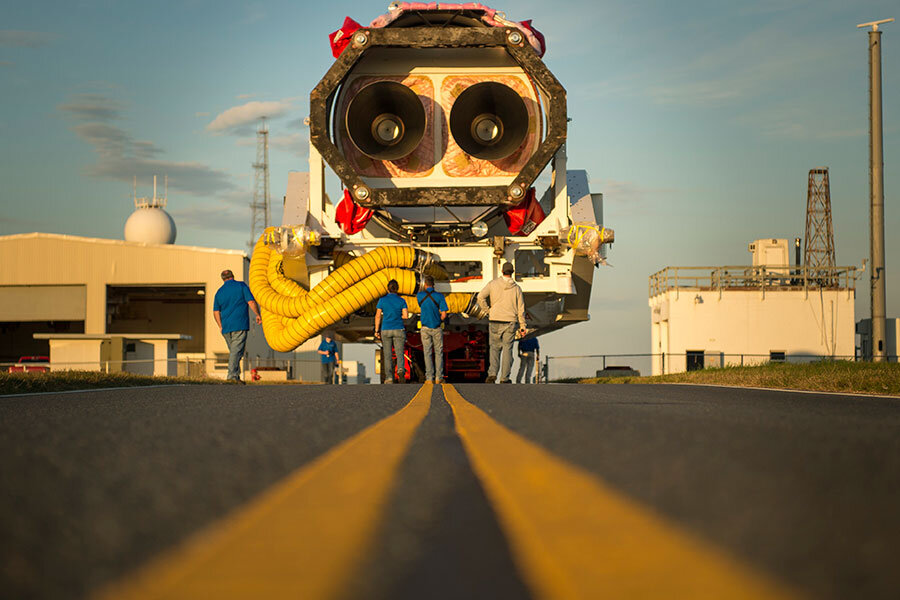How high are the stakes for the Orbital ATK launch on Sunday?
Loading...
Keep an eye out for a bright light in the sky on Sunday night. The Orbital rocket launch, scheduled for around 8 p.m. Eastern time, will be visible along most of the East Coast, and as far inland as Pittsburgh, if skies are clear.
But for Orbital ATK, it’s more than an impressive display. Two years ago, the commercial spaceflight company suffered a setback when a liquid oxygen turbopump exploded, causing the Antares rocket to fall back to the launchpad within seconds of liftoff. Its cargo, intended for the International Space Station, was destroyed in the fire that followed. Since then, the company has retooled — and hopes to prove that it is now back on track.
The stakes look high, not only for the company but also for NASA. The agency has been working to increase public-private cooperation in space, including contracting with spaceflight companies to supply the International Space Station with cargo. If the Orbital launch fails, it casts doubt on the viability of that plan.
Of the three International Space Station suppliers, two – Orbital and SpaceX – have had costly launch problems. SpaceX’s most recent issue was traced to the helium system, and may not take as long to repair as the Orbital fix did: the company has said it plans to resume flights in November. And Orbital was, in fact, able to meet its contractual agreements with NASA by partnering with United Launch Alliance LLC and Energomash.
“It was important to us to maintain a steady cadence of Cygnus deliveries to the station while simultaneously upgrading Antares,” an official for the company told The Planetary Society. “It was not easy to do this, and we appreciate the support our partners provided to help us execute this plan.”
The success of commercial resupply efforts is a key element of NASA’s efforts to get to Mars, a goal affirmed by President Obama on Tuesday, when he stated that humans could make it safely to Mars by the 2030s, if all goes according to plan. Delegating space activities closer to home to commercial providers allows NASA to focus its energies on activities farther afield.
Some say Sunday’s launch could make or break Orbital. Its reputation would no doubt be compromised if, after two years and countless engineering adaptations to mesh a new engine with an existing vehicle, the flight was not completed.
The financial implications are also significant. The company has avoided reporting any losses from participating in NASA’s Commercial Resupply Services program, the New York credit analyst firm Moody’s Investors Service Inc., said in a report. Insurance and increased mission efficiency likely helped make that possible.
However, Orbital’s revenue will probably be between $100 million and $150 million less than it had predicted for the period between April 2014 and March 2016, the company reported. That disclosure has had a significant impact on shares in the company, which traded down around 25 percent upon that announcement and are still down around 22 percent.
Orbital seems optimistic about Sunday’s launch. “We were able to accomplish [the necessary changes] successfully culminating in a hot fire test of the entire stage with the new engines in May and are now ready for launch in just a few days,” one official told a company representative collecting comments for The Planetary Society.
Follow the progress of the launch here: https://www.orbitalatk.com/news-room/feature-stories/OA5-Mission-Page/default.aspx?prid=180








